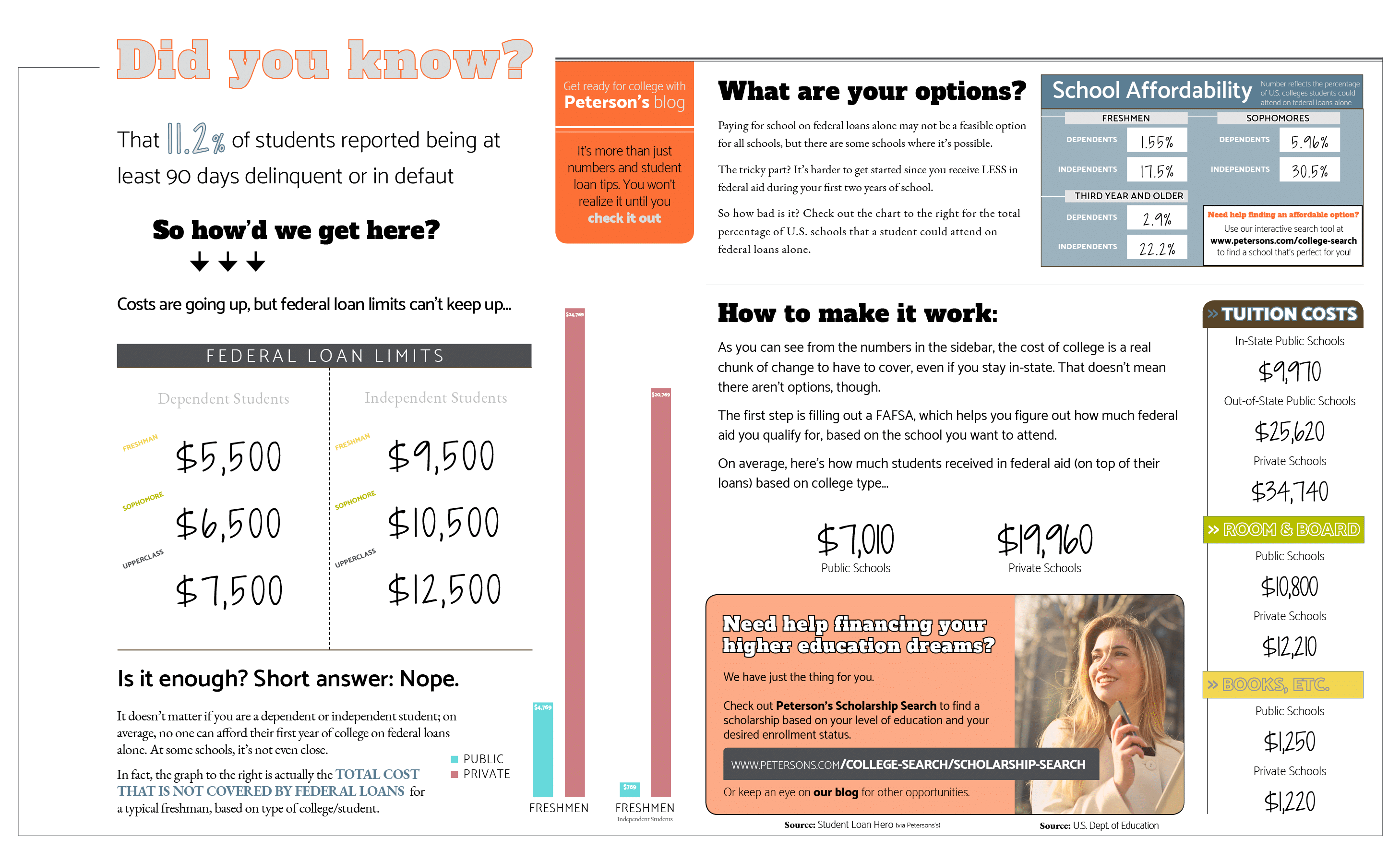You get good grades, accepted into that state school you’ve dreamed of your whole life and then you can borrow funds within the federal loan limits to make it a reality… right?
Well, not quite.
Federal loans are a fixed, affordable way for many students to make their education a reality, but what many people didn’t know is that their are strict limits as to how much you can borrow from the government. And as the cost of college continues to go up, more and more students are finding out that federal loans may not be enough.
Federal Loan Limits and College Costs
If a lot of students don’t know about limits on federal loans, it’s safe to assume that even fewer know that the amount you can borrow is based on how far along you are in your pursuit of a degree. It may seem counterintuitive, but the longer you stay in school, the more you can borrow from the government on a year-to-year basis.
The amount you can borrow also depends on if you are a dependent or independent student, regardless of whether or not your guardians will be helping you with repayment. It can be tough to figure out exactly how much you can borrow, and how far it will get you.
We’d suggest starting here:
The Value of Picking the Right School For You
As you can see in the above infographic, there are only a handful of schools that many students can afford by borrowing the maximum amount allowed by federal loan limits. The key thing to remember is that value does not mean you are getting any less of an education.
A lot of times, schools that offer more affordable programs can actually do so because of the quality of their education, and systems they have in place to help students afford college. It’s easy in our capitalistic world to equate the price tag with quality. It’s dangerous to do that with your education.
Here’s what I’d suggest: Make a list, and mix in ‘value schools’ and more traditional public and private options. Start looking at how much you pay in fees, what options are available for student life and on-campus amenities and then get yourself on campus and kick the tires a little bit.
I bet you’d be surprised at how your options stacked up.
Trimming the Margins
Another fact you’ll notice in the infographic are the variable levels of cost.
And it makes sense–private schools are usually going to cost more, and most students understand why tuition is more expensive when you go out of state. What may not be as apparent is how many other variables there are when it comes to cutting costs.
Do you get your books from the bookstore, or on Amazon? Do you buy or rent? Some schools offer free subscriptions to software such as Microsoft Office and Adobe Creative Suite, others just offer discounts. Other schools, we’ll call them ‘the cool ones’, will even throw in perks like access to certain streaming channels or other online resources.
As you’re building a budget and sizing up student loans, these details can make or break your plan.




